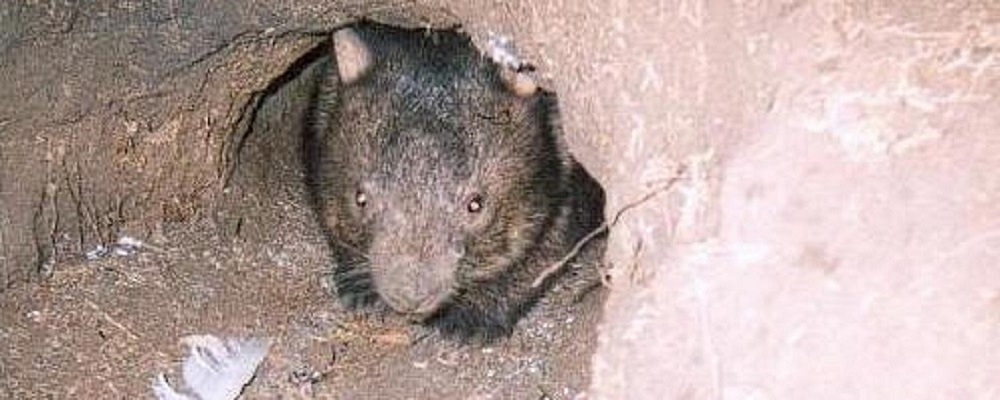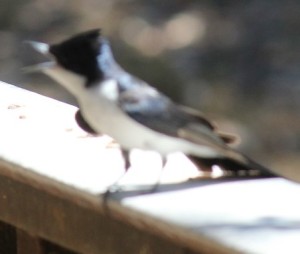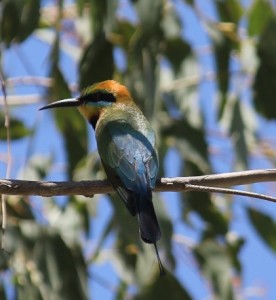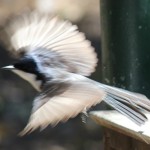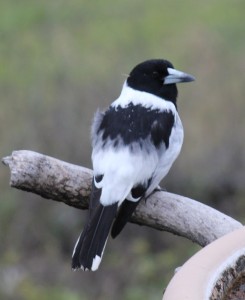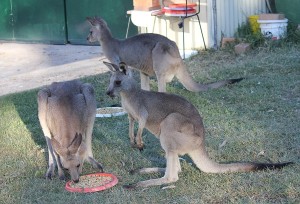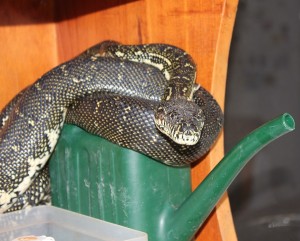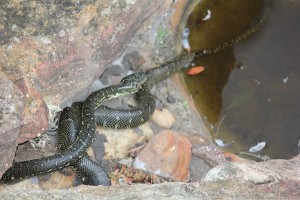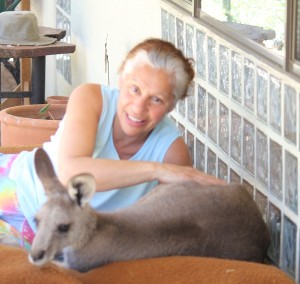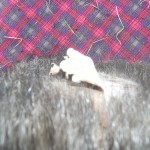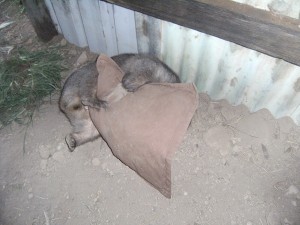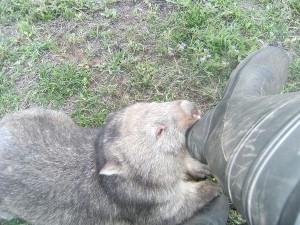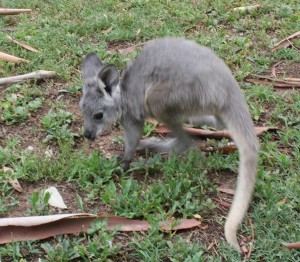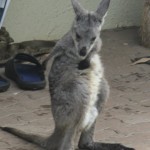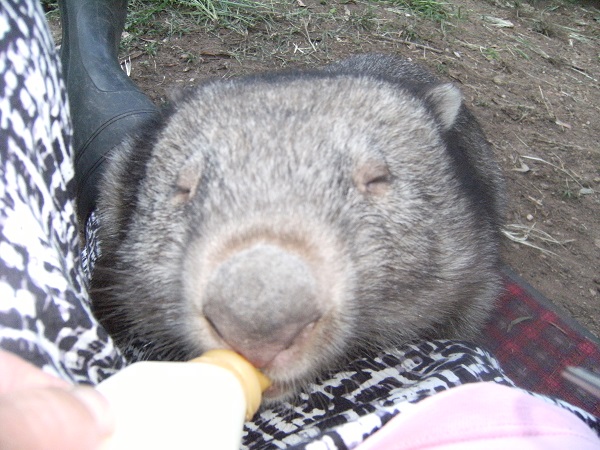Each spring the Channel-billed Cuckoo and the Common Koel fly from their homes in Papua New Guinea and Indonesia to mate in the sub-tropical region of Australia. During Oct and the first week in Nov 2014 it was wonderful to have lots of Channel-Billed Cuckoos passing through here. The ravens give them a good telling off so we were even wondering if maybe some had been raised around here and their foster parents were seeing them off. We were hearing and seeing them every day . We also saw a couple of Koels.
and many Black Faced Cuckoo Shrikes, they all have a distinctive calls. In Sydney we used to get quite a few Koels and Black Faced Cuckoo Shrikes come into care. The Channel-billed Cuckoo is the world’s largest parasitic bird, its wingspan measuring up to 1 metre. The adults work in pairs , the male cuckoo provokes host-birds into chasing it while the female cuckoo slips into the host-nest to lay its eggs.Occasionally in Sydney a Channel-Billed Cuckoo would come into care but the only ones I rescued had to be euthanized due to broken wing injuries. Perhaps this was because they are such a large bird that when learning to fly in Sydney there were so many hazards for them to fly into. By Dec 2014 we were seeing Koels every day, lots of them ! Can’t say if they were the same ones hanging about or many passing through but we saw adults of both sexes and juveniles. It’s now Jan and they have only just all gone .Black Faced Cuckoo Shrikes usually travel in groups. Some groups are nomadic and also migrate northwards. We always get them passing through at the same time every year.
We were also been seeing Bee Eaters in pairs as we drive into town always in the same area and around this time of year, Oct. Some people believe that Bee Eaters have 1 mate for life. Our neighbours, Bob & Pam, arrived for a few days respite in the bush. Bob who is a keen bird watcher noticed a bee eater flying to a small hole in the ground just outside their cabin . He got his bird book out and soon discovered that bee eaters make their nests by tunnelling into a sandy bank or a patch of flat bare ground. The tunnel maybe over a meter long with the end enlarged to form an egg chamber. The two adults were continuously flying backwards and forwards to get food to feed their young. Rainbow Bee Eaters are so active a single bird can eat several hundred bees daily if available and of course are immune to bee and wasp stings. We were very fortunate to be able to see this feeding ritual. Bob and Pam watched the adults fend off a black snake who thought he was in for an easy feed but got it wrong!
We have had a restless flycatcher around the house every day for the past couple of months We have seen them around here but they don’t usually stay for any length of time .This one stayed around for weeks. It’s a delightful little bird and we don’t mind it’s call .It’s sometimes referred to as razor grinder,scissors or dishwasher!
We came across a tiny little bird that looked like a miniature plover as we driving along the road about 2k from home. It was lying down on the road with it’s wings fully extended and fluttering and seemed injured. We stopped and got out to check and we found she was playing dead and just near by had laid 3 eggs in a little groove on the round which were completely exposed to any car wheels. The eggs seemed quite large for such a small bird. We moved them just off the road in the hope that she would find them . When we went back the next day to look the eggs were gone , either eaten or she moved them. We weren’t sure what the bird was It looked like a baby plover but obviously wasn’t. After my description my friend Bunny has identified the little bird ,an Australian Dotterel.
Another regular visitor is “Pete” the butcherbird who comes to the veranda for small bits of heart that we put out if we see him around . Actually he turned out to be Peta not Pete as I watched her feeding her baby while sitting with Fidel in the early mornings while he grazed and I read ….. very relaxing .
I started this post last year in Oct but for some reason I couldn’t get motivated to continue and finish so I apologise as it maybe a bit disjointed.
As you know from my last post Larry and I have been treating the wombats on our property and adjoining properties for about a year now . We have had very good results. We haven’t seen a wombat with mange on our property or the adjoining property for some time now. Bob and Pam had one on their place with mange just before we started the treatment which I believe was quite bad. We tried to find where his burrow was but couldn’t and sadly Pam found him dead on a hillside not that long ago. We have successfully treated several adults and using night vision camera to check them makes things easier. Quite a few land owners with wildlife refuge status treat the wombats on their property for mange now thanks to Lee Skerratt’s research done quite a few years ago. http://research.jcu.edu.au/portfolio/lee.skerrat Really worth taking a look at what Lee has done and what he is doing now .
Do you remember Bronte the grey kangaroo? She had a baby we called Bobo and I was sure would be a girl as I read that kangaroos can select the sex of the baby if they find that there are too many males in their group. Bronte had all males in her group so I decided that if this baby was definitely going to be a girl. It turns out that Bobo is a boy ! I don’t know how many males are too many or maybe Bronte just prefers male company. Bronte’s group now is 7 most of the time. Her, Bobo, Billy, Bozo (who has returned ) The group has been joined by another mother with a baby at heel .We think maybe Bucky will return eventually. Bronte has another baby in pouch. Billy stills come to the house paddock .He is very big and we have noticed in the last 3mths while there has been a good rain fall and food is plentiful how the growth rate of the kangaroos accelerates. Bozo comes to the house paddock sometimes for some grain .He will let us touch him sometimes as long as we don’t try and hug him! Him and Billy are often sparing in next door paddock in the early morning ,they were friends before Bozo took off. Bozo stands about a foot taller than Billy .He would be just over 3 years old now.
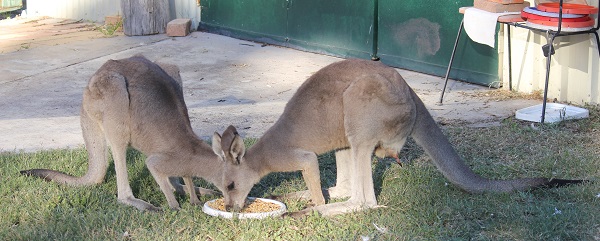
Bronte and BIG BIlly – you can see Billy is now bigger than Bronte although he would be at least a year younger
Bobo is about 18mths old .
We have decided that after observing how things go for the past 3 years while we have been living here that it is a mistake to take animals from other groups outside the area that raise animals in backyards and pens and bring them here for release. We believe if we continued to do that it would upset the natural balance and humans have managed to do quite enough of that. We now only take in and raise animals from this area that for some reason have lost their mother.
Snakes don’t usually take Larry by surprise but this one did. Fortunately it was a python. We have a shelving fixture just outside the back door which has bits and pieces on it ,whatever we put there at different times. As Larry reached over to slide the back open to come inside something reached across and slithered up his arm. We had a few rats around so this python was giving us some help!
After raising Fidel and observing wombat behaviour I have formed the opinion that wombats in particular should be kept in the area and within the gene pool where they are born. I completely agree with Helen George that this plays a big part of their successful release and survival as a free living wombat. It has become apparent to me that wombats without their mother have a hard enough time as there are lessons that as humans we can’t teach them .I spent about 3hrs daily in the bush with Fidel and I still don’t think that was adequate and as I didn’t want to live down a burrow that was about the best I could do. If you read my last post you may recall the attack on Fidel due to the fact I couldn’t stop him from going down other wombat burrows if I wanted to take him grazing out and about so he learnt the layout of the area , where the river was etc. He became very naughty when he realised if he went down a burrow I couldn’t get him back to the pen for lockup ,just like a cheeky teenager. He was only about 11 kilo , to small to defend himself against a large aggressive wombat. After he was attacked ,in the last post I showed a pic of Fidel’s back which looked like the fur had just come out and I thought there were no puncture marks although suspected his back was bruised and sore . He was quite subdued for about 3 days but still ate his grass and guzzled down all his milk. I didn’t take him out in this time but then I noticed he seemed to have something in his nostril causing him to make sneezing type noises . After a couple of days it was still going on so I made a call to the veteran Helen George .At this stage his back still looked the same, no puncture marks . Helen suggested to me that he may have some milk caught behind the soft palate causing an upper respiratory infection and I should embark on a course of antibiotics as whatever the problem was it would probably fix it and wouldn’t do any harm , so it off to the vet in town to pick up the antibiotics .The antibiotics were a 7 day course of injections .1 given in the morning and 1 in the evening. Wombats are so tough that a sub cut injection is given in the tummy area. It was a 2 man job! I had to wrap the bulldozer up in a blanket (he won’t tolerate anyone else holding him) sit down and wedge him firmly between my legs while Larry (who is better than me at giving injections so that worked out well) gave him the shot. We thought maybe we could give him the injection while he was drinking his milk and seemingly going into a state of navara so wouldn’t notice. He would stand with his front paws on my thigh and drink his milk so Larry gave him a shot while he was doing this. We got away with it once. The next time he just positioned himself so his tummy couldn’t be got! Wombats are very smart. Larry’s nephew, Darren, told me he watched a documentary where an electric wire was put in front of many animals including , dogs, horses ,cows , roos and more .The only animal that never repeated walking into the wire a second time was the wombat . Fidel was lucky as he learnt a valuable lesson from his attack without sustaining a permanent injury. After that incident he would stay close to me and always come when I told him to . The antibiotics took effect within 3 days. The skin lifted and was like a leather hide and the broken skin with claw marks became apparent . He made a good recovery . His fur took a few weeks to grow back and was a different colour but now if you didn’t know what had happened you wouldn’t see any difference.
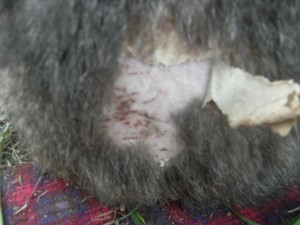
the deceptive wound – you can see all the claw marks quite clearly once the skin lifted – poor Fidel
By the end of Dec Fidel was 15 kilo so on the 1st of Jan I left his pen open so he could come and go as he pleases. He still lives in his burrow in the pen but I guess he will eventually leave there. He comes up to the house paddock to graze some evenings .His pen is not that far away .Contrary to popular belief he doesn’t try to get into the house . He was never in the house when growing up so this maybe the reason. He will go round the house as he does know where I am and sometimes makes piggy grunting noises but he just he just takes himself off if he doesn’t see me. He doesn’t make a nuisance of himself to anyone else but is still very naughty around me wanting to play .He must be between 15 – 16 kilo now , maybe heavier, and is very strong. I have been wanting to sleep outside as I have a little wallaroo that is nearly ready for night grazing but Fidel will not leave me alone if I’m in the bed outside, pest. He will drag off my blanket and roll himself in it , claw my head /hair ,snort ,snuffle and bite hard , generally be a pain. If I walk back to the pen with him he will stay there but I haven’t tried that then going back to bed outside , I am getting there. The periods in between his visits vary, sometimes it will be 4 nights and we don’t see him so I am picking that he as gets a bit older he’ll be off further afield doing his own thing. Mother wombats drive their offspring out of their territory when they are about 18kilo.I’m not really sure how I could emulate the same behaviour as I can’t see myself on all fours doing a wombat charge and sinking my teeth into him, I think I would come off second best! Fidel is quite fine taking care of himself now and Larry and I were going off for a short break and some friends were going to stay at our place while we were gone which was going to be good as Fidel takes off around other people but I didn’t know I was going to have “Pretty Britty” so now I have to wait till she is old enough to be left.
It’s very interesting having a little wallaroo girl after having only greys. They are very different . Britty was 1600 grams when I got her ,now approx. 3 kilo .She will be out of her the bag completely within the next month. She is very mature although she seems so small. The greys are like big lumps lying around in their bags at 8 kilo ! She is about 8mths old and will drink milk till she’s about 15mths old.
